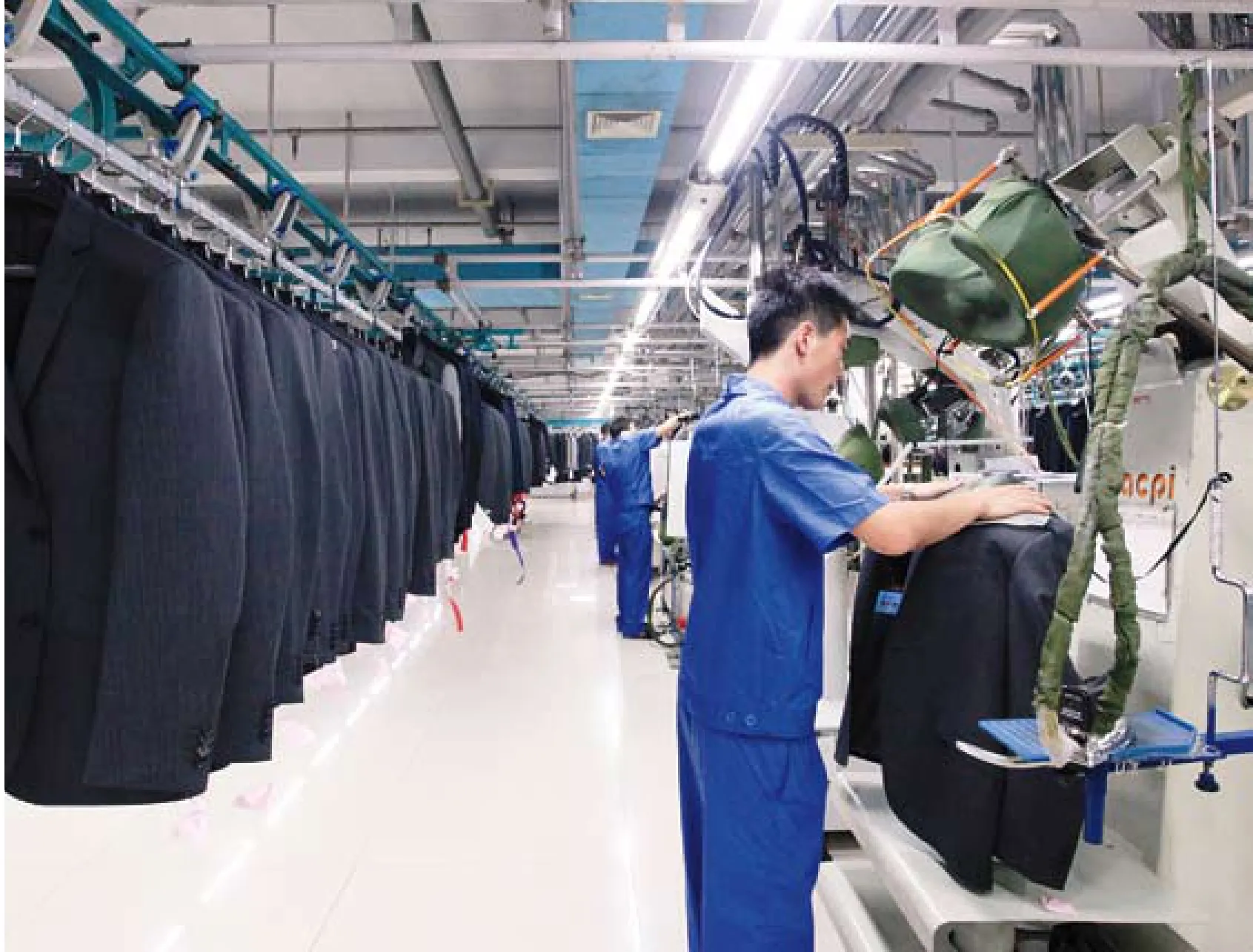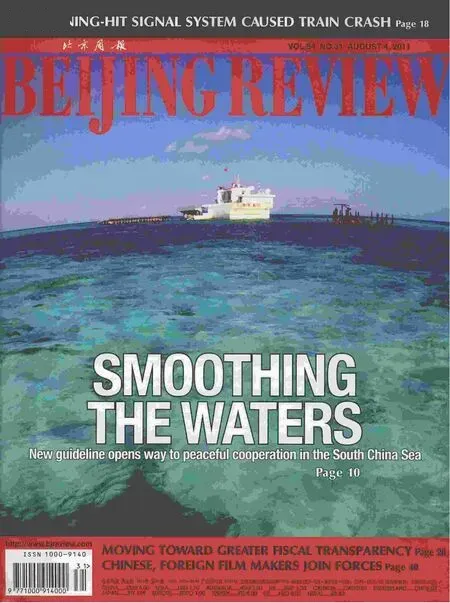Fabric Fair
By CHEN WEN
Fabric Fair
By CHEN WEN
Massive textile show in New York brings U.S. and Chinese apparel industries closer together
While New Yorkers were busy scouring department store aisles for the best summer sales bargains, executives from major U.S. fashion houses and brands did some shopping of their own.
Walking purposefully around New York City’s enormous Jacob K. Javits Convention Center, representatives of leading U.S. retail outlets such as Chico’s, Gap and Urban Outftters were also looking for bargains and value for money at Texworld, the largest apparel fabric sourcing event in North America.
Three exhibitions ran simultaneously at the center from July 19-21: Texworld U.S.A., the International Apparel Sourcing Expo and the Hometextiles Sourcing Expo. The exhibitions were co-organized by the Textile Industry Sub-council of the China Council for the Promotion of International Trade (CCPIT TEX) and Germany’s Messe Frankfurt Inc.
Around 600 frms from 17 countries and regions including China, the United States, Egypt, India and Pakistan participated in the exhibitions.
The majority of exhibitors were from China, with 79 Chinese companies displaying ready-made apparel, 102 presenting in the Hometextiles Sourcing Expo and another 142 promoting garment-related materials.
Chinese exhibitors held a textile show in New York every year from 2000-10. The fair, organized by the CCPIT TEX, was known as the China Textile and Apparel Trade Show.
In 2010, the CCPIT established a partnership with Messe Frankfurt Inc. to merge its show with Texworld U.S.A., another major fabric expo. They also launched the International Apparel Sourcing Expo and the Hometextiles Sourcing Expo together.
“The three shows provide a good platform for those engaged in different sections of the textile industry’s supply chain to communicate with each other and explore enhanced cooperation,” said Wang Tiankai, Vice President of the China National Textile and Apparel Council (CNTAC), speaking to the press after the event’s opening ceremony.
笔者不惮篇幅,引用其说,意在彰明石涛论中国画创作整体性的“曲折”逻辑:笔墨→氤氲→混沌→一画(实为笔墨)→自我→笔墨→胎一(即混沌)→氤氲→笔墨,由此进入到创造的循环之中。此段批评,实际上是论说了笔墨与氤氲、笔墨与自我、笔墨与混沌三种关系,但石涛并未以今天常见的批评方式,分而论之,而是以线性回文的三个回环,来曲折言说。于此,正鲜活现出积淀在中国艺术家、批评家心灵与思维深处的“曲折感”。
Lucia Chen, Merchandiser for Lenzing Fibers (Shanghai) Co. Ltd., a sub-offce of the Austrian Lenzing Group, toldBeijing Reviewthe scale of the exhibition allows her to guide buyers, who are interested in Lenzing’s fabric, to other manufacturers who are already using Lenzing products. “It’s a one-stop sourcing venue which is very convenient,”she said.
Redefining ‘Made in China’
The textile industry is one of China’s traditional pillar industries. CNTAC fgures show about 20 million people are currently employed in the textile industry in China. In 2010, China exported $206.53 billion worth of apparel.
“The Chinese apparel industry has already formed clusters of enterprises operating in every part of the industrial chain, from making small buttons to producing fnished products,” said the CNTAC’s Wang.
“The low cost of production has won Chinese textile companies orders from all over the world. But with the rising cost of raw materials, labor and energy, plus the constraints of limited natural resources and pollution, the Chinese textile industry is facing pressures and challenges,” he added.
Neal Lei, a sales manager of Nature Holding Group Co. Ltd., a knitting company based in east China’s Zhejiang Province, said his company is striving to fnd ways to lower costs.
Lei’s frm has begun adjusting its manufacturing techniques to increase output and improve administrative effciency. The company is a fabric material provider mainly for European and U.S. retailers including Gap and Walmart.
Lei said factories manufacturing relatively low-cost textile and apparel products are being shifted from China to other countries and regions with lower labor costs—including the Philippines, Viet Nam and parts of South Asia.
Leading Chinese companies are already exploring ways to add value and creativity to their textile and apparel products and services.
Rubin Lou, Managing Director of Homex Soft Furnishings (Hangzhou) Ltd., came to the exhibition to sell the company’s home furnishing products. “We have excellent teams of designers in Britain and we make high-quality products in China based on our own exclusive designs,” Lou said.
Since its establishment in December 2006, the company has made its products available in major UK department stores such as John Lewis, he said. It is now looking to enter the U.S. market by partnering with department stores and retailers like JCPenny and Pier 1 Imports.
Zhang Yankai, Vice President of the CNTAC, said China aims to turn itself into a powerhouse in the textile industry by 2020.“Chinese frms must acquire the ability to innovate, create new technologies and develop brands, and they must learn from other countries with more advanced technologies,” he said.
Trading with America
The United States is China’s second largest export market for textiles and apparel, second only to the EU. Statistics from China’s General Administration of Customs show China’s textile and apparel exports to the United States reached $33.73 billion in 2010, up 27.7 percent over the previous year, and accounting for 16 percent of China’s total textile and apparel exports.
“While China exports large volumes of textile products to the United States, it also imports a lot of raw materials related to textile production from the United States. For instance, cotton and many advanced technologies are imported from the United States,”said Zhang.
“Textile trade is an important component of Sino-U.S. trade relations, though it’s not always smooth,” he said.
The two countries entered a three-year agreement in December 2005 aimed at reining in Chinese textile and apparel exports to the United States after the Multi Fiber Arrangement, also known as the Agreement on Textile and Clothing, which imposed quotas on the volume of clothing developing countries could export to developed countries, expired in January 2005.
In July 2009, the U.S. Department of Commerce announced it would investigate allegations China-made electric blankets were being sold in the United States at unfairly low prices. After the investigation, the United States decided to levy an anti-dumping tariff of up to 174.85 percent on imports of Chinese electric blankets, despite China’s opposition to the measure.
The dispute over electric blankets was the frst major Sino-U.S. textile trade dispute after U.S. quotas on Chinese textile exports were lifted in January 2005.
But broader friction on trade-related matters between the two economic powerhouses is a common occurrence. While the United States has blamed China for causing job losses in its textile industry, the latter has criticized Washington for resorting to trade protectionism.
Despite the friction, the current trade environment between the two countries is good, the CNTAC’s Wang said.
“The most direct pressure on domestic textile enterprises in China comes from rising costs,” he said. “What they need to concentrate on is improving techniques and making competitive products that leave little room for doubts or criticism.”
(Reporting from New York City)

ChEN WEN

XINhUA

